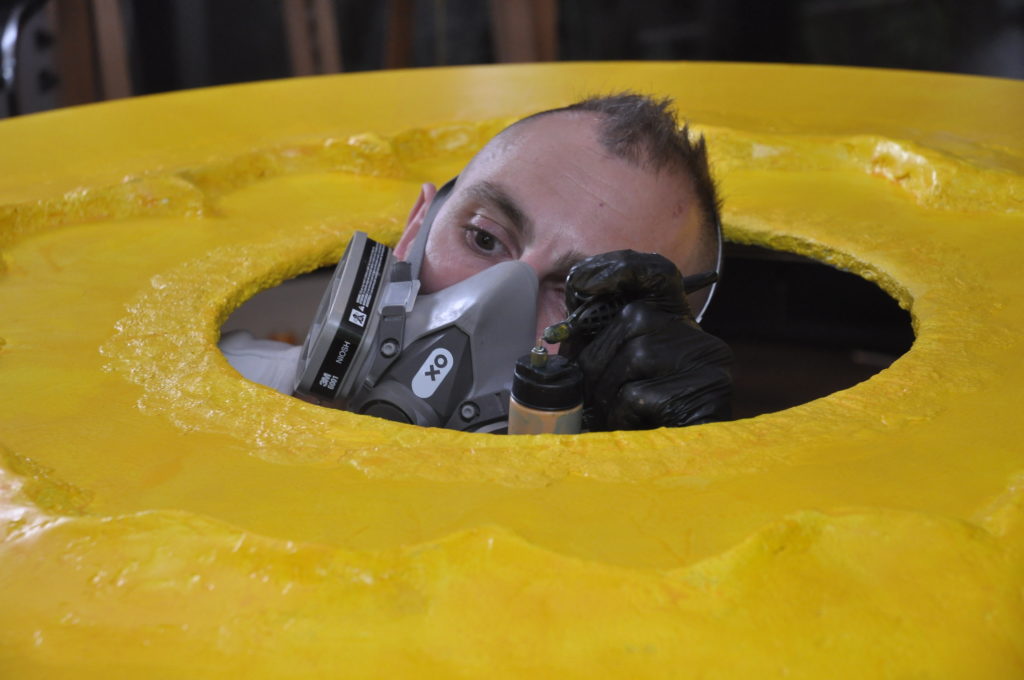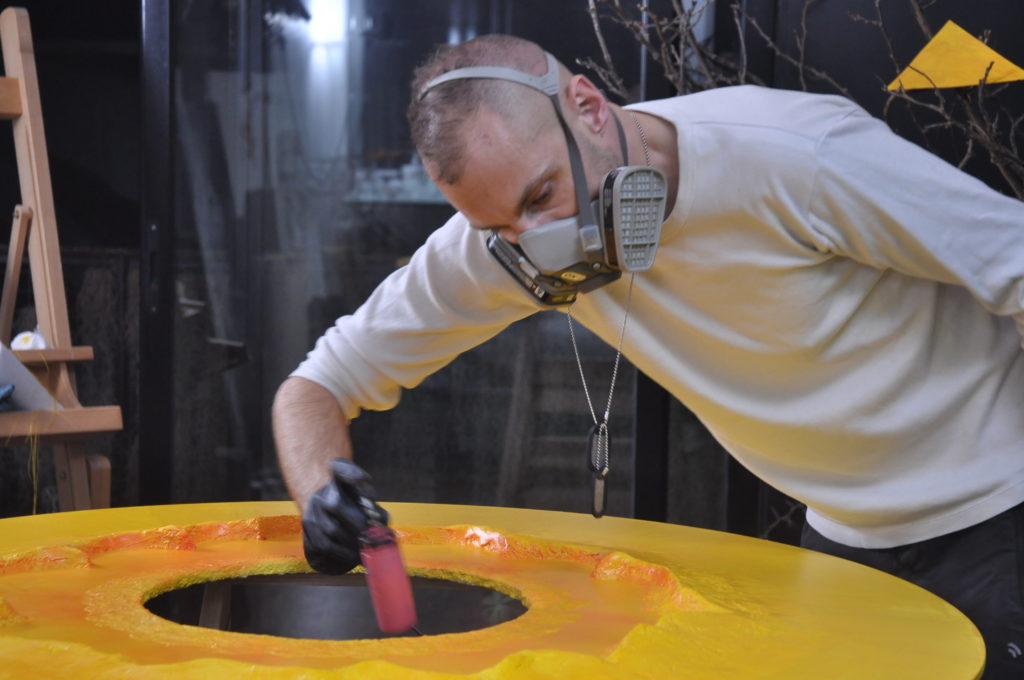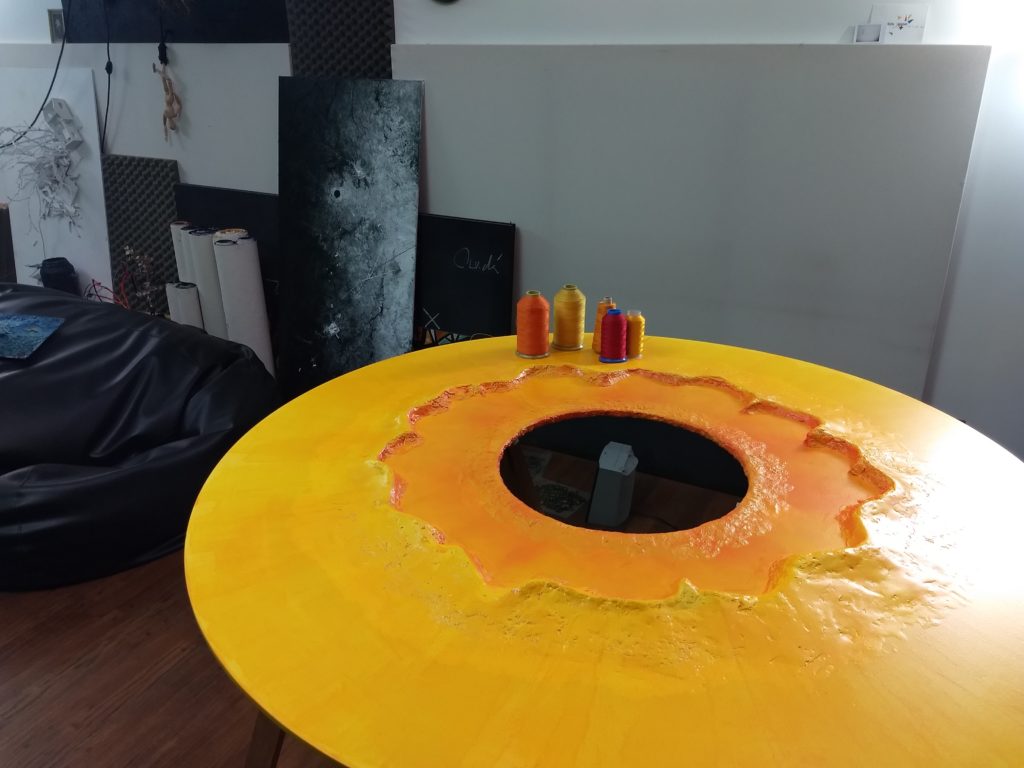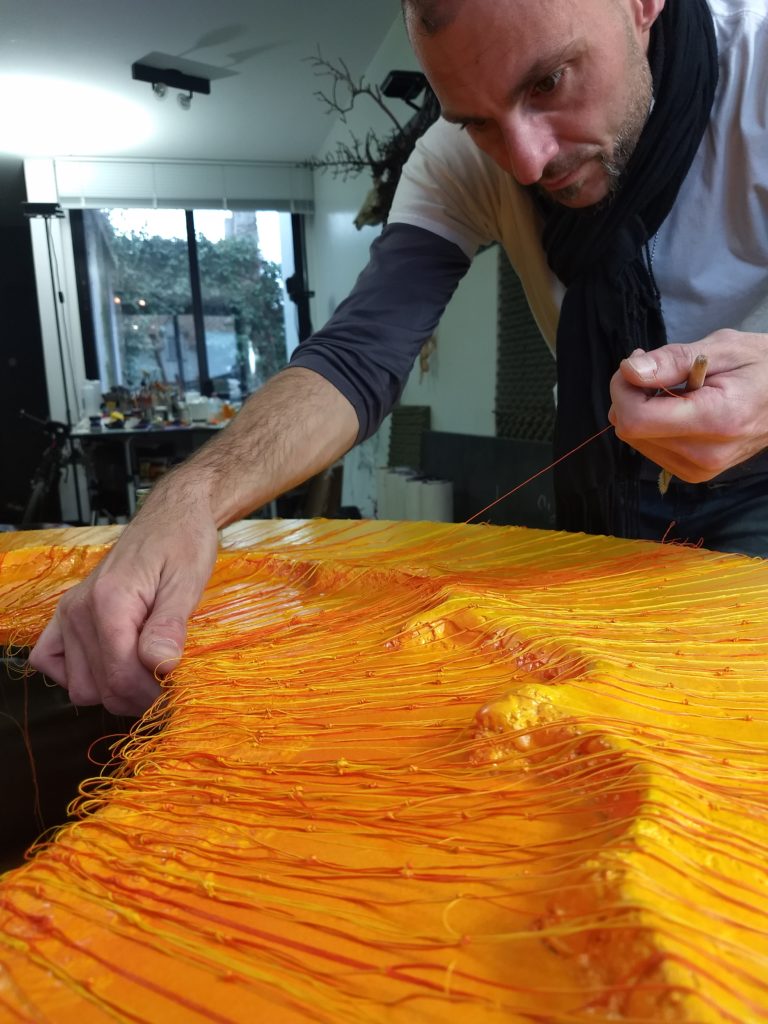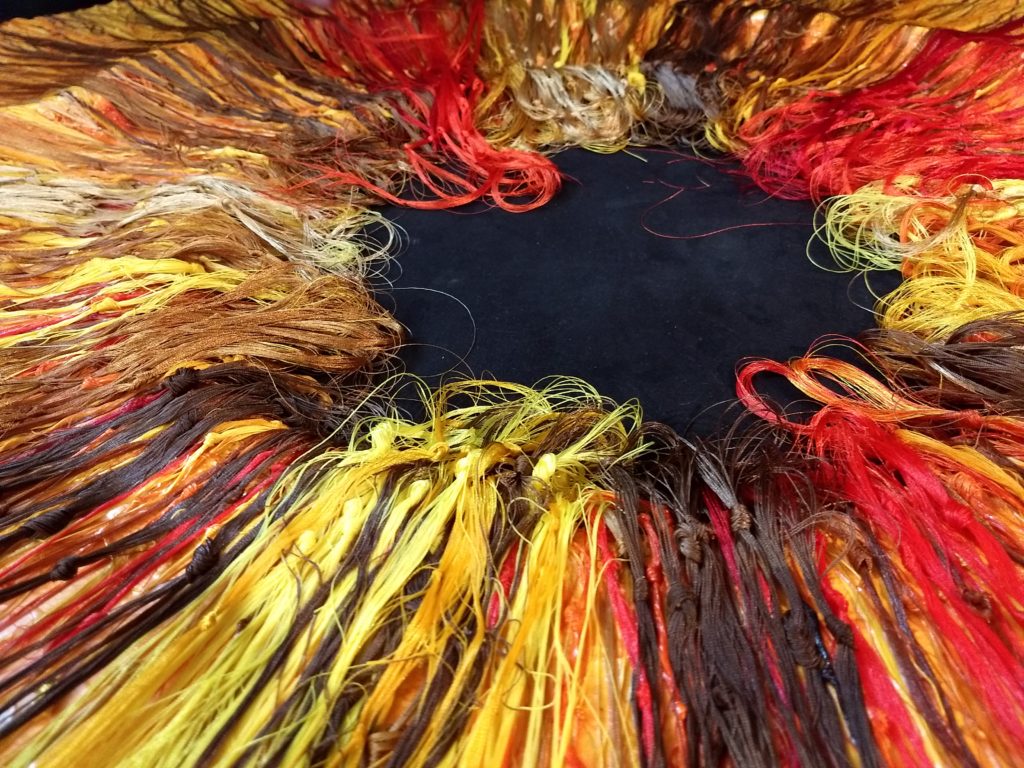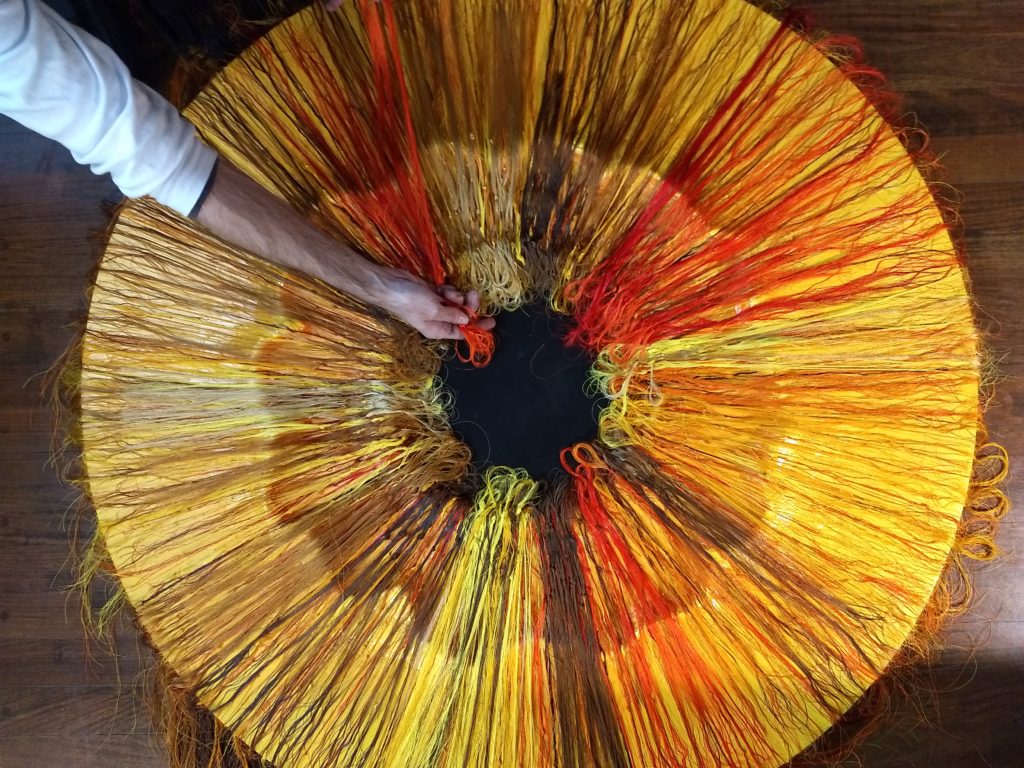Luciano Testi Paul was awarded the Solar Mandala Grant, and he created an abstract sculptural interpretation made of strings, inspired by the Incas and Andean knotted string records. I asked him to explain the piece in an artist’s statement, which you can read below.
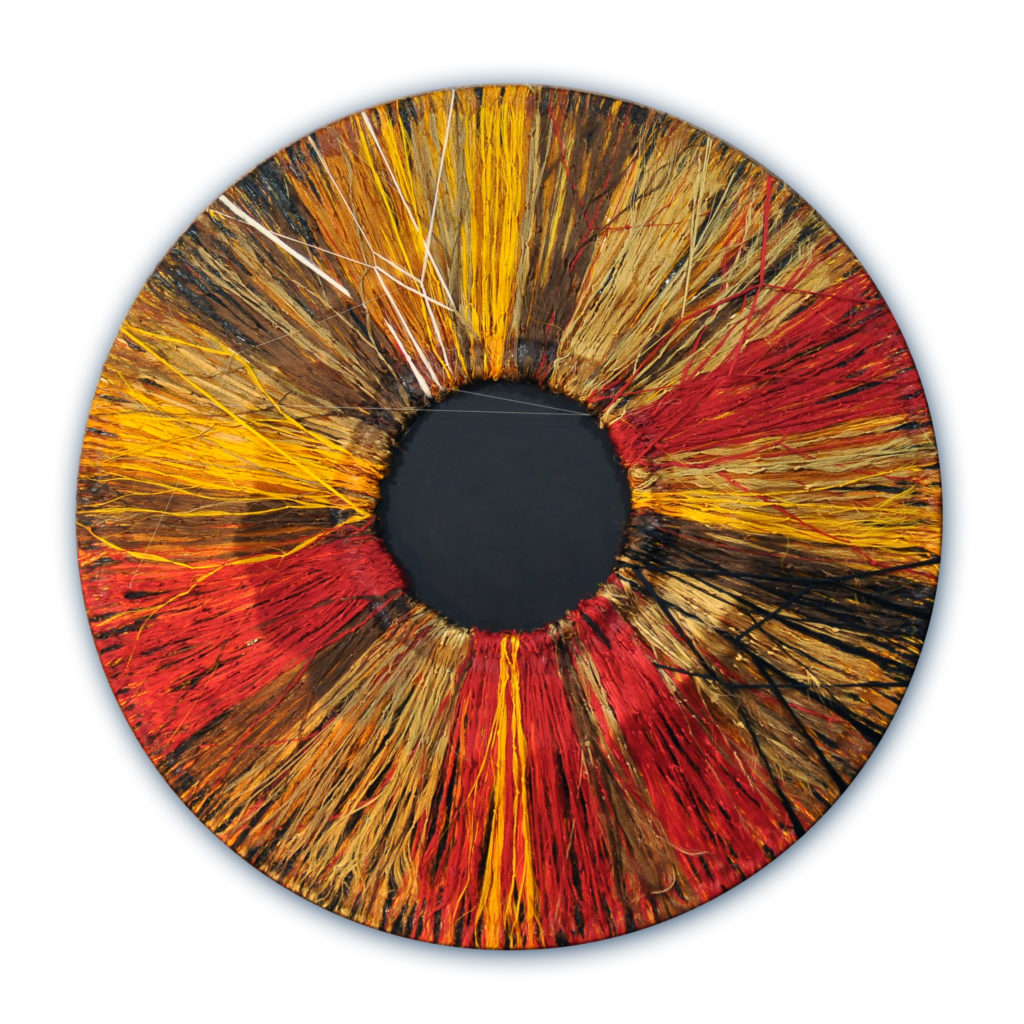
Artist’s Statement
My intention for the Solar Mandala Grant was to explore the concept of Logos —the masculine principle of rationality according to Jung. Jung equated Logos and Eros —his intuitive conceptions of masculine and feminine consciousness— with the alchemical Sol and Luna.
I also wanted the resulting object to embody related concepts and ideas such as Sol, Spirit, Consciousness, Order, Discrimination(Differentiation), Time and Vision.
Consciousness of the transitory nature of material life is the idea in which the Buddhist tradition of sand mandalas is based upon. The creation of a solar mandala is a meditative practice about achieving Wholeness from Parts. Its atomic element being the grain of sand, representing earth (Feminine), whose dismantling force is Air (Masculine).
For the solar mandala I wanted to rely mostly on organic materials (representing water, also a feminine element) such as wood and cotton threads (Eros again, binding, feminine) whose dismantling force would be Fire (male).
The fifth element —Logos as Spirit— emerges from the work by the very act of making: Confronted with Time and aware of its constraints (Chronos/Terrible Father/Fire or Air) the Spirit aims at Transcendence —Thus constellating the Hero, whose impulse is to bring forth Order by defeating Chaos (Nature, The Terrible Mother/Earth or Water).
Besides the aforementioned inspiration by the sand mandalas of the east, from which I used both the creative process and its round shape, I also wanted to honour the main solar culture of the west: The Incas.
The Incas encouraged the sun worship of Inti – their sun god – and imposed its sovereignty above other cults such as that of Pachamama. The Incas considered their king, the Sapa Inca, to be the “son of the sun.”
Inca myths were transmitted orally until early Spanish colonists recorded them; however, some scholars claim that they were recorded on quipus, Andean knotted string records.
A quipu usually consisted of cotton or camelid fiber strings. The Inca people used them for collecting data and keeping records, monitoring tax obligations, properly collecting census records, calendrical information, and for military organization. The cords stored numeric and other values encoded as knots.
For this reason, I saw the quipu as the perfect material embodiment of Logos in its ordering and discriminative aspect, and wanted to honour this ancient system of record keeping as well.
The third and most obvious aesthetic metaphor I wanted to suggest was Vision, implied by the human eye. This allowed me to merge and unify all the previous metaphors —as well as the materials I wanted to use— and arrange the quipu resembling threads as if they were the thin muscle strings from which the Iris of a human eye is made.
Luciano Testi Paul
Buenos Aires, 21 September 2021
The Work in Progress
The photos below document the creation of Luciano Testi Paul’s Solar Mandala.
PH2T3R Creator and Primary Editor.
Author of The Way of Men, Becoming a Barbarian, A More Complete Beast, and Fire in the Dark.


